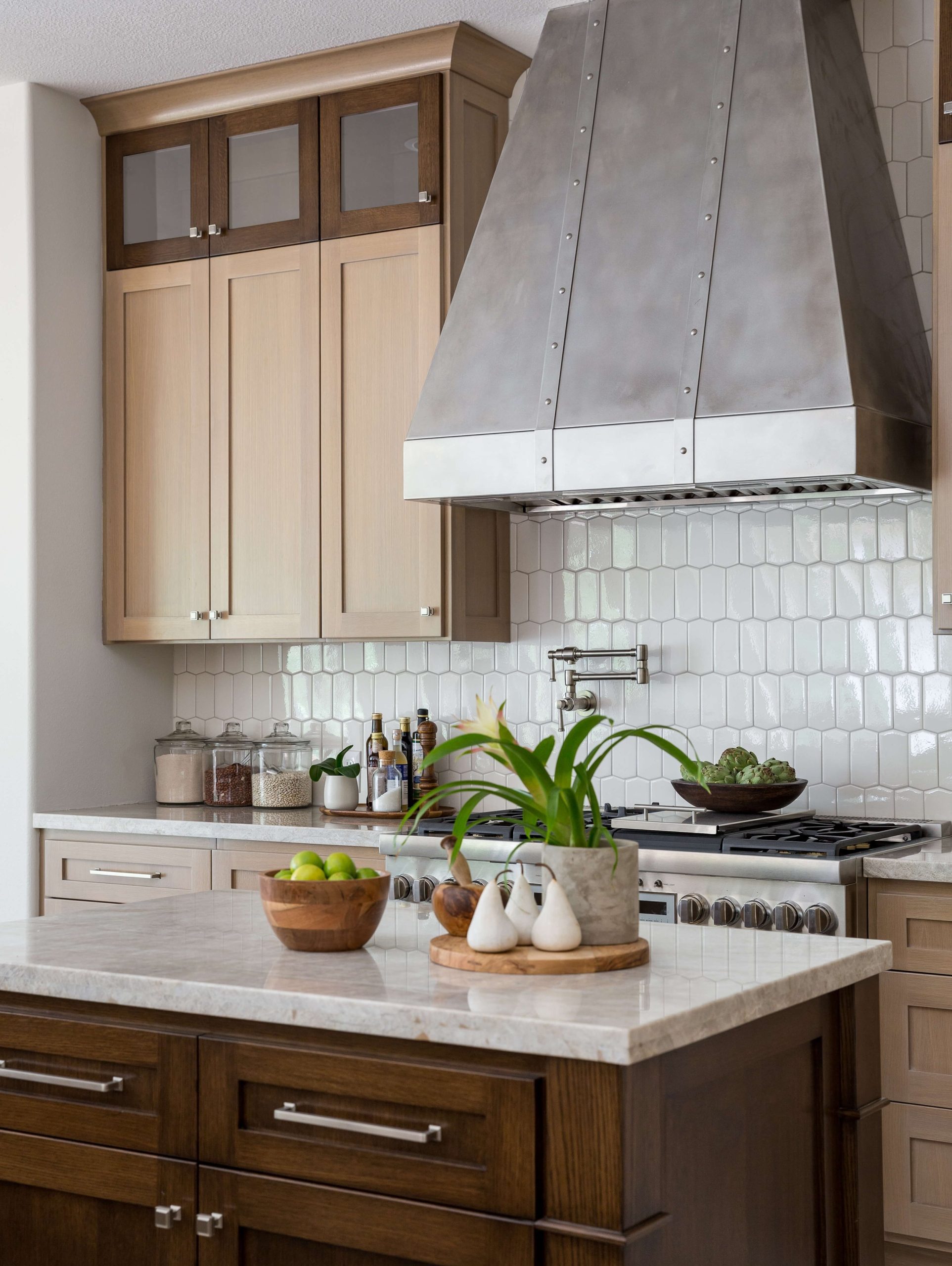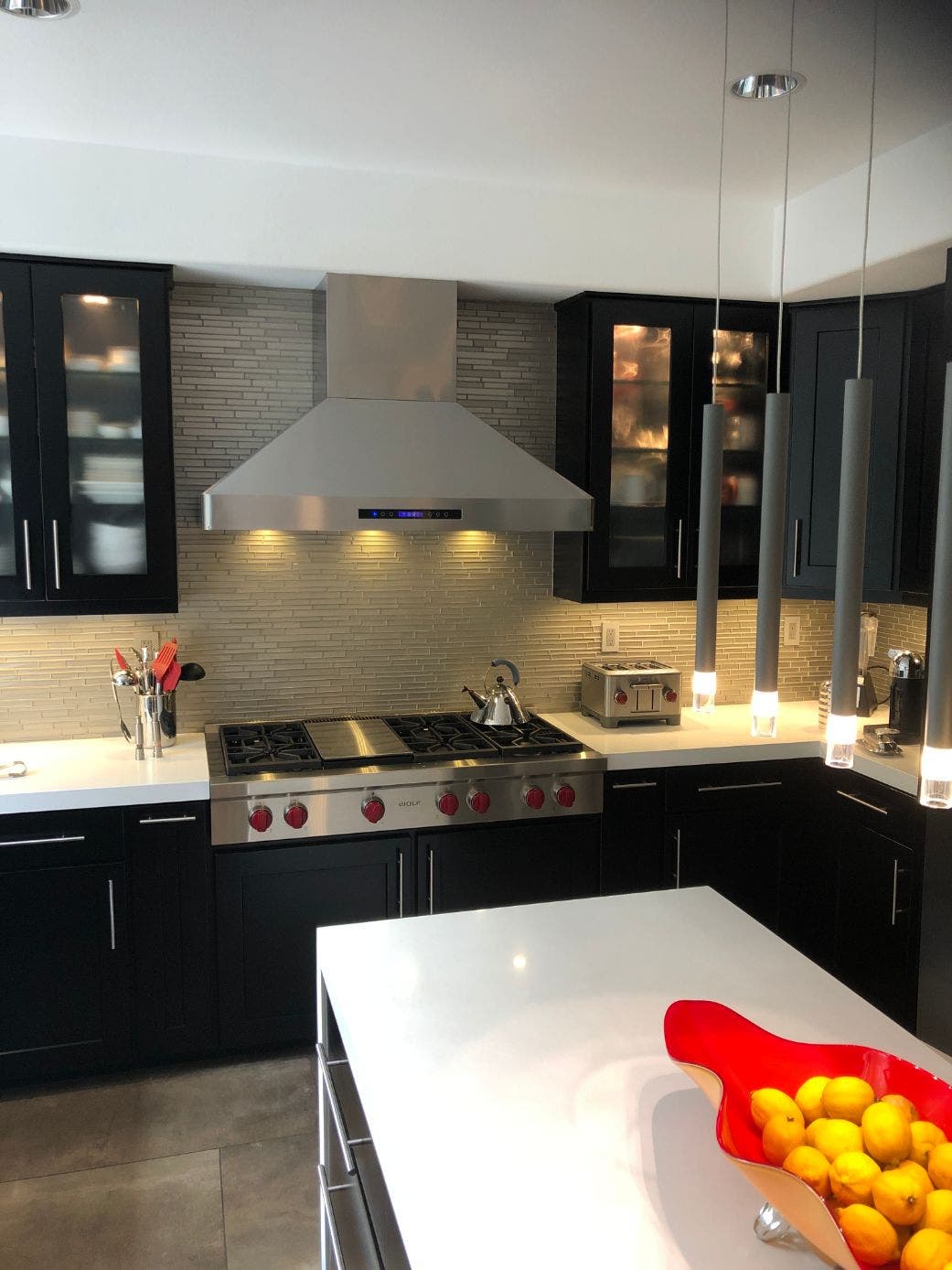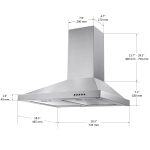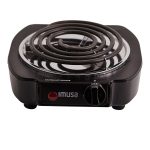Introduction
Distance between range and hood – Effective ventilation is crucial in any kitchen to maintain air quality, remove cooking byproducts, and prevent the buildup of grease and odors. One essential aspect of ventilation design is the clearance between the range and the hood. Optimal range-hood clearance ensures that the hood can effectively capture smoke, steam, grease, and odors generated during cooking, improving indoor air quality and enhancing the overall cooking experience.
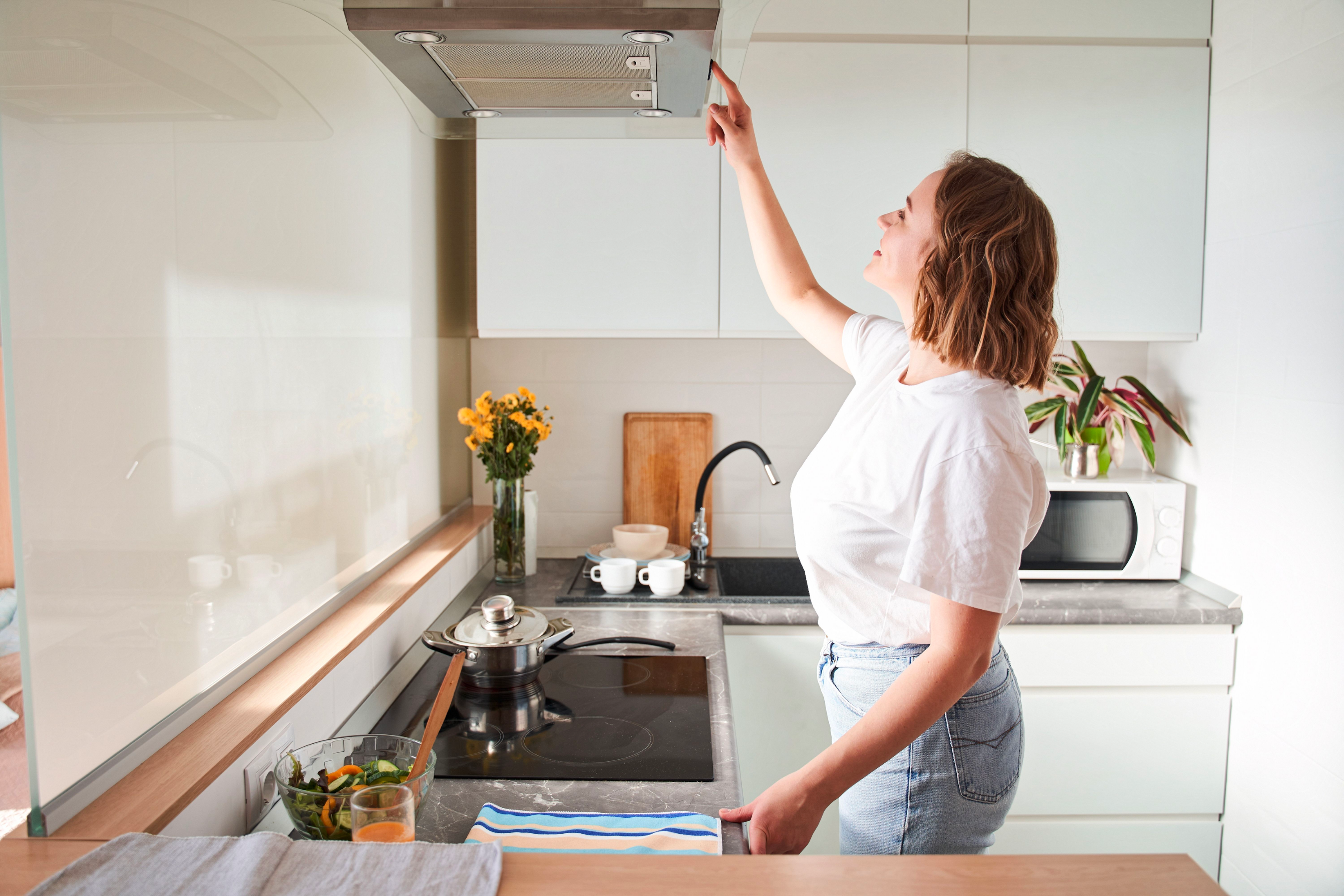
Importance of Range-Hood Clearance
- Smoke and Steam Removal: Adequate clearance allows the range hood to efficiently capture smoke and steam emitted from cooking activities. Without proper clearance, smoke and steam may escape into the kitchen, leading to poor air quality and potential health hazards.
- Grease and Odor Control: Clearance between the range and hood facilitates the capture of grease particles and cooking odors, preventing them from dispersing throughout the kitchen and other living spaces. This helps maintain a clean and pleasant environment for cooking and dining.
- Fire Safety: Clearances specified by building codes and manufacturer recommendations are designed to minimize the risk of fire hazards. Keeping the range hood at the appropriate distance from the cooking surface reduces the likelihood of grease buildup and potential ignition sources.
- Appliance Efficiency: Proper clearance ensures that the range hood operates efficiently by allowing unrestricted airflow. When the hood is positioned too close to the cooking surface, airflow may be obstructed, reducing the effectiveness of ventilation and requiring the hood to work harder to remove airborne contaminants.
Determining Optimal Clearance
- Manufacturer Guidelines: Refer to the manufacturer’s instructions for the range hood to determine the recommended clearance specifications. Manufacturers typically provide specific guidelines based on the type and model of the hood to ensure optimal performance.
- Building Codes and Regulations: Local building codes often stipulate minimum clearance requirements for range hoods to comply with safety standards. These codes may vary depending on factors such as the type of cooking equipment, the size of the kitchen, and the ventilation system’s capacity.
- Cooking Habits and Appliances: Consider your cooking habits and the type of appliances used in the kitchen when determining clearance. High-output cooking appliances, such as commercial-grade ranges or grills, may require greater clearance to accommodate larger volumes of smoke and heat.
Practical Considerations
- Adjustable Mounting Options: Many range hoods feature adjustable mounting brackets or extension kits, allowing for flexibility in installation and accommodating varying ceiling heights and cabinet configurations.
- Proper Installation: Ensure that the range hood is installed correctly according to the manufacturer’s instructions and local building codes. This includes securely mounting the hood, properly positioning the ductwork, and sealing any gaps to prevent air leaks.
- Regular Maintenance: Maintain the range hood and ventilation system by regularly cleaning filters, ductwork, and exhaust outlets. Proper maintenance helps optimize performance and ensures the longevity of the appliance.
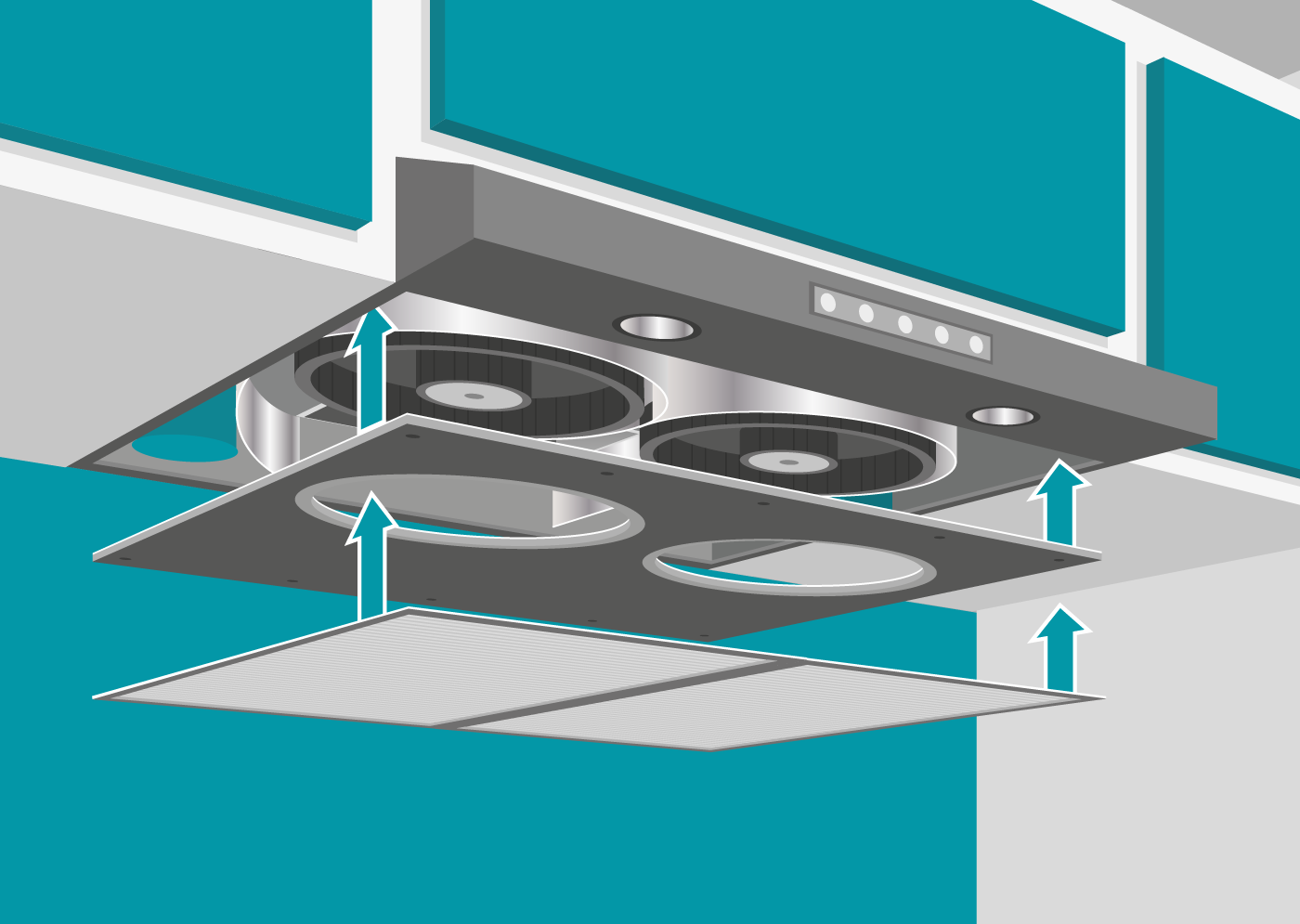
Factors Affecting Range-Hood Clearance
- Kitchen Layout and Design: The layout of the kitchen, including the placement of cabinets, countertops, and cooking appliances, can influence the available clearance for the range hood. Design considerations such as island cooktops, wall-mounted ranges, and overhead cabinetry may require adjustments to ensure adequate clearance.
- Ceiling Height: The height of the ceiling above the cooking surface plays a crucial role in determining the appropriate clearance for the range hood. Higher ceilings may necessitate longer duct runs or adjustable mounting options to maintain optimal ventilation performance.
- Ductwork Configuration: The design and configuration of the ductwork connecting the range hood to the exterior of the building can impact clearance requirements. Straight, unobstructed duct runs with minimal bends and turns facilitate efficient airflow and may allow for reduced clearance distances.
- Type of Cooking: Different cooking methods and styles produce varying amounts of smoke, steam, and grease, affecting the ventilation needs of the kitchen. For example, frequent frying or high-heat cooking techniques may require greater clearance to accommodate increased emissions.
Installation and Adjustment Tips
- Consultation with Professionals: When in doubt, consult with a qualified HVAC technician or kitchen designer to assess the specific ventilation requirements of your kitchen space. They can provide expert guidance on clearance recommendations and optimal hood placement.
- Test Runs and Adjustments: After installing the range hood, conduct test runs to evaluate its effectiveness in capturing cooking byproducts. Adjust the hood’s position or mounting height as needed to achieve optimal performance and airflow.
- Considerations for Recirculating Hoods: If using a recirculating range hood instead of venting to the exterior, be aware that clearance requirements may differ. Recirculating hoods rely on filters to remove airborne contaminants before recirculating air back into the kitchen, requiring sufficient space for filter access and maintenance.
- Future Renovations and Upgrades: Anticipate future kitchen renovations or appliance upgrades that may impact ventilation requirements. Allow for flexibility in the range hood installation to accommodate changes in kitchen layout or cooking equipment over time.
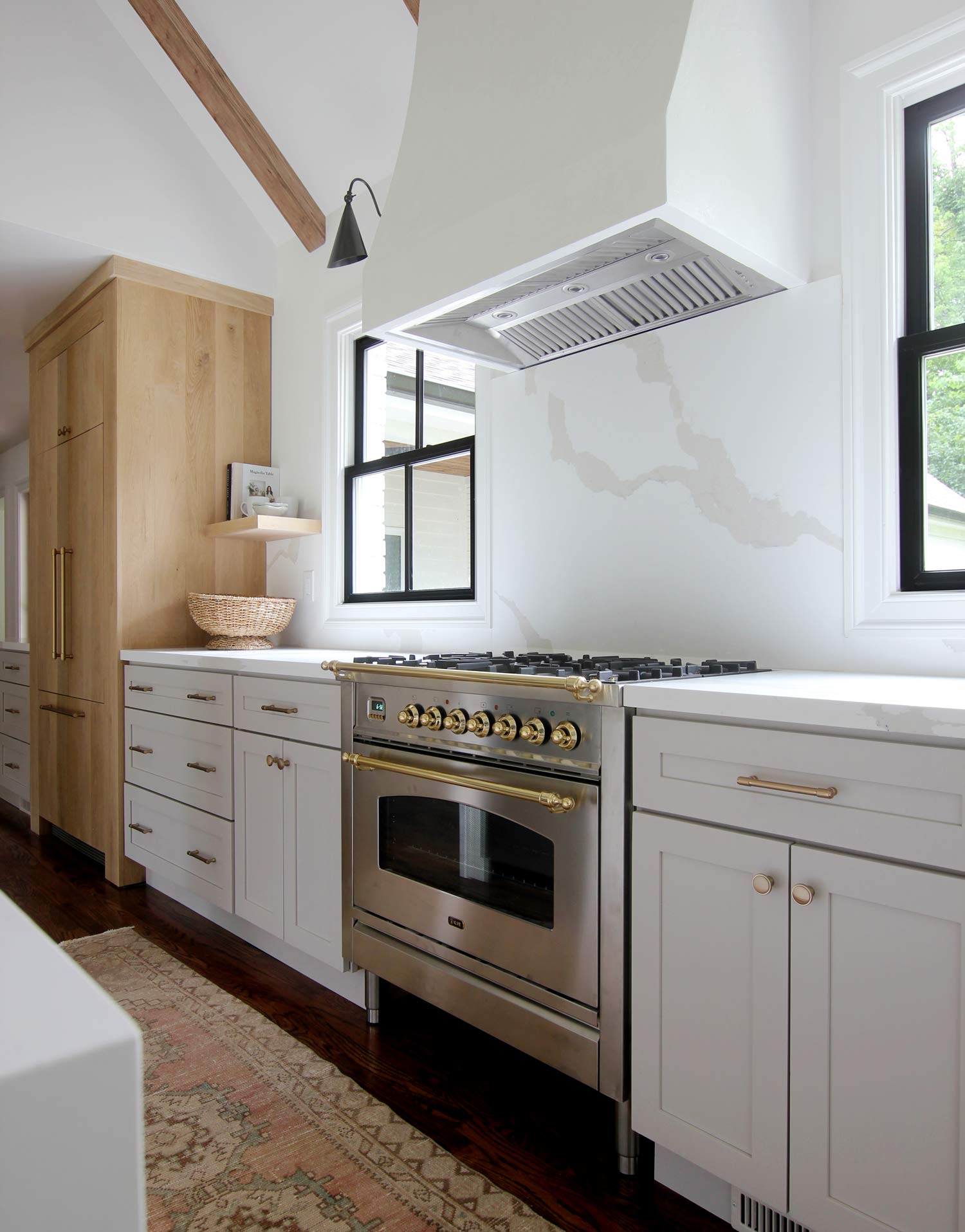
Advanced Clearance Considerations
- Exhaust Hood Sizing: Properly sizing the exhaust hood relative to the cooking equipment is crucial for effective ventilation. Oversized hoods may create excessive airflow, leading to energy inefficiency and noise, while undersized hoods may struggle to capture cooking byproducts adequately. Consult with ventilation experts to determine the appropriate hood size for your kitchen setup.
- Makeup Air Requirements: High-performance range hoods that exhaust large volumes of air from the kitchen may create negative pressure, resulting in a lack of makeup air. Insufficient makeup air can lead to backdrafting of combustion appliances, reduced ventilation effectiveness, and discomfort due to drafts. Incorporate makeup air solutions, such as passive vents or dedicated makeup air systems, to balance air pressure and maintain indoor air quality.
- Variable Speed Controls: Range hoods equipped with variable speed controls offer flexibility in adjusting airflow to match cooking intensity and airflow requirements. By modulating fan speed based on cooking activity, variable speed hoods optimize ventilation performance while minimizing energy consumption and noise levels.
- Ductwork Insulation and Sealing: Insulating and sealing ductwork helps prevent heat loss, condensation buildup, and air leaks, improving the efficiency and effectiveness of the ventilation system. Proper insulation reduces thermal transfer between the ducts and surrounding spaces, while sealing prevents air leaks that can compromise airflow and indoor air quality.
Environmental Considerations
- Energy Efficiency: Choose energy-efficient range hoods with high-performance motors and advanced filtration systems to minimize energy consumption and environmental impact. Energy Star-certified models meet stringent efficiency standards and offer significant energy savings compared to conventional hoods.
- Carbon Footprint Reduction: Opt for range hoods made from sustainable materials and featuring eco-friendly design features, such as low-power LED lighting and recyclable components.
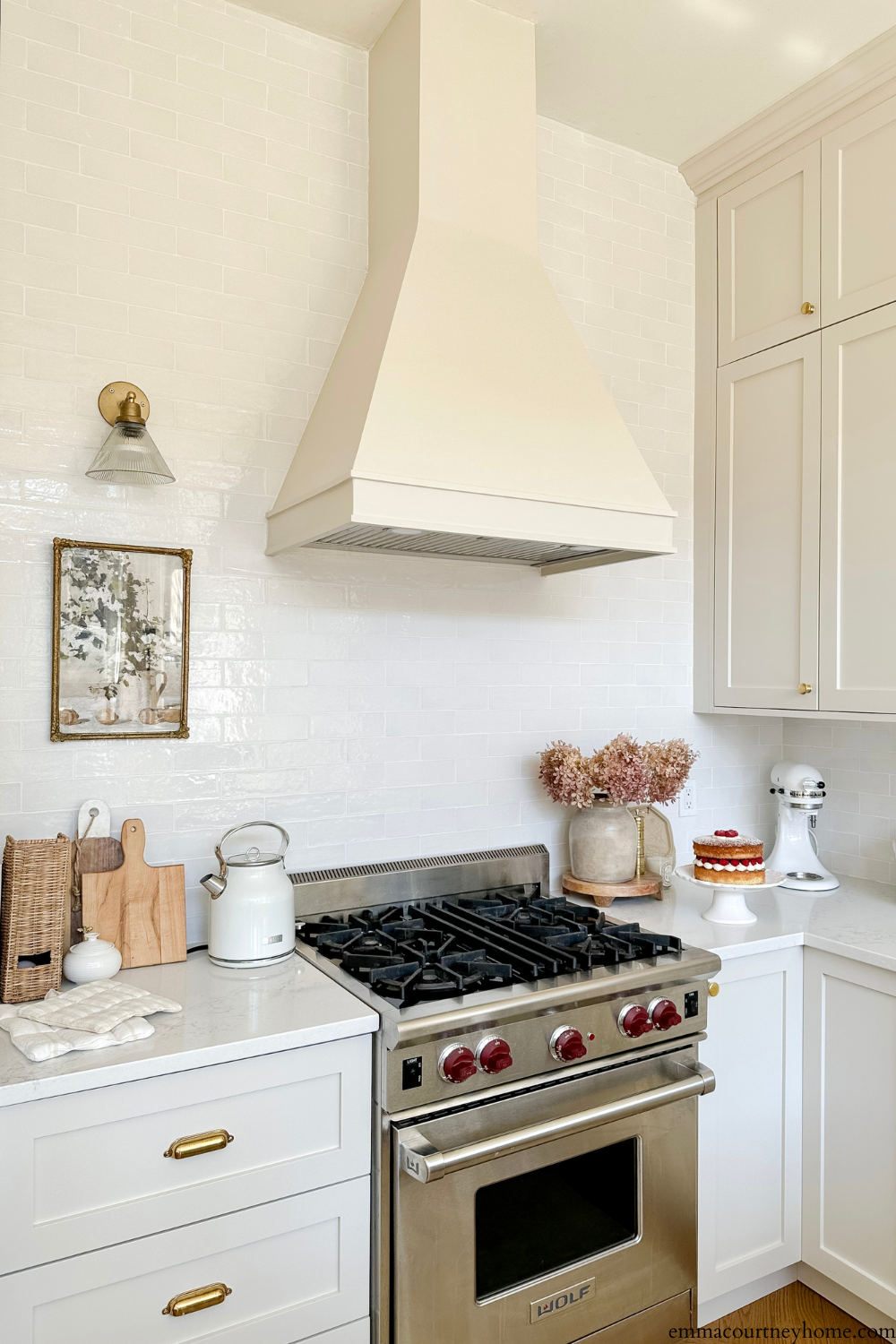
Conclusion
Distance between range and hood – Optimal range-hood clearance is essential for effective ventilation, smoke and steam removal, grease and odor control, and fire safety in the kitchen. By adhering to manufacturer recommendations, local building codes, and practical considerations, homeowners can ensure that their range hoods operate efficiently and contribute to a healthy and comfortable cooking environment.
